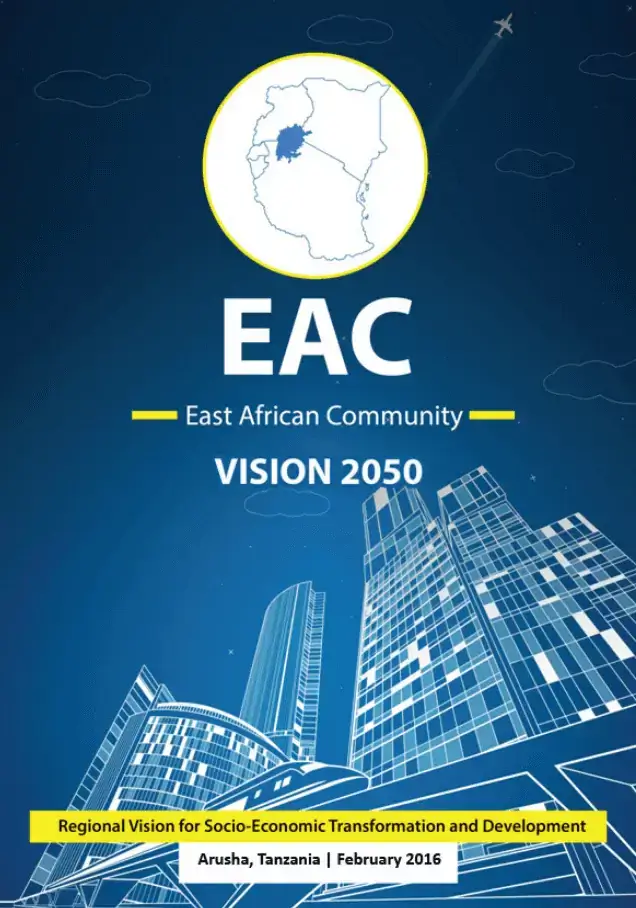The East African Community (EAC) is an inter-governmental organisation mandated by the governments of Burundi, Kenya, Rwanda,
Uganda and Tanzania to spearhead the East African economic, social and political integration agenda. The areas of cooperation are specified in the Treaty for the Establishment of the East African Community that entered into force in July 2000. The regional cooperation and integration envisaged in EAC is broad based. Operationally, EAC uses five year development strategies to facilitate the implementation of the Treaty in a systematic manner. To guide the formulation of the five year development strategies and achieve
full development potential for the region, it has now become necessary for the Community to develop a longer term vision – EAC Vision 2050.
The Vision 2050 focuses on initiatives that will create gainful employment to the economically active population. It aims to accommodate the development pillars and enablers that will create jobs to absorb the expected expansion of workforce during the duration of the Vision 2050. The identified pillars and enablers are integral to the very idea of long-term transformation, value
addition and growth needed for accelerating the momentum for sustained growth over the long term. The pillars are infrastructure
development; industrialization; agriculture, food security and rural economy; natural resource and
environment management; and tourism, trade
and services development.
This includes infrastructure and transport network that is efficient and cheap both for movement people and goods for regional competitiveness; energy and information technology that is easily accessible to citizens;
and industrialization that is built on structural
transformation of the agricultural and manufacturing sectors through high value addition and
product diversification based on comparative
and competitive advantages of the region.

